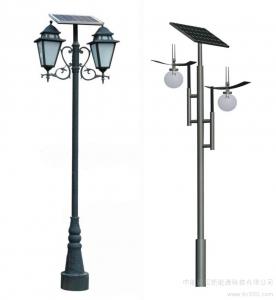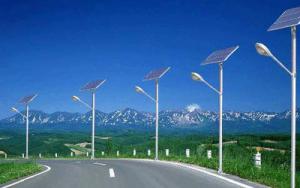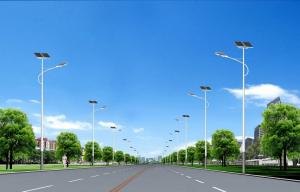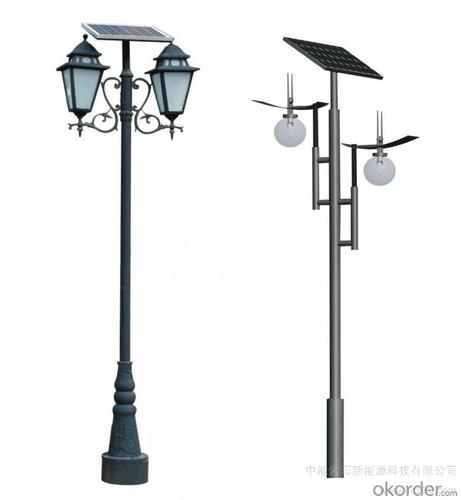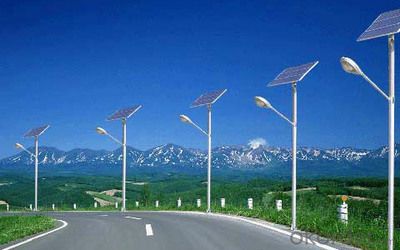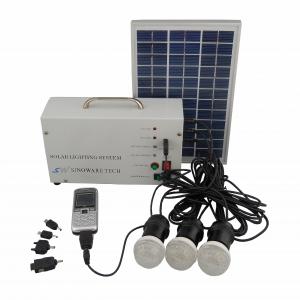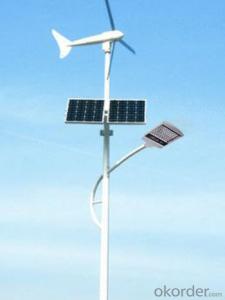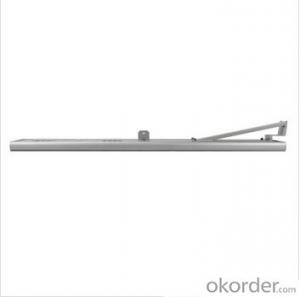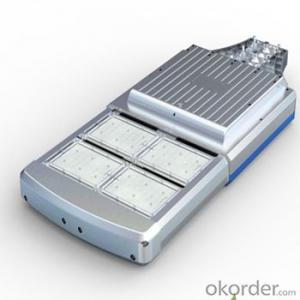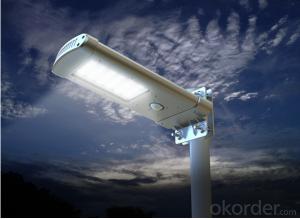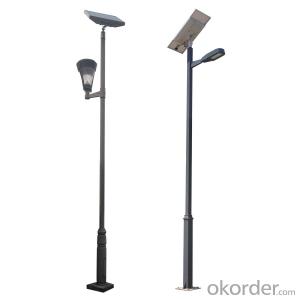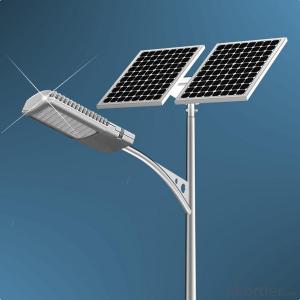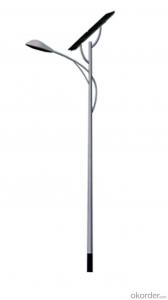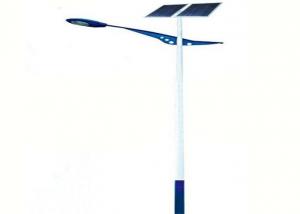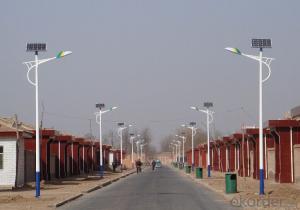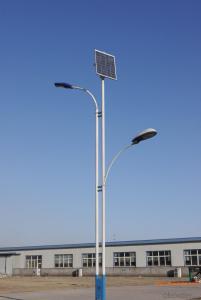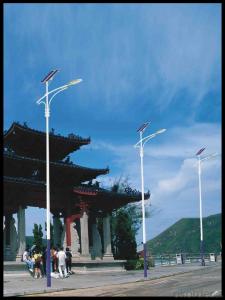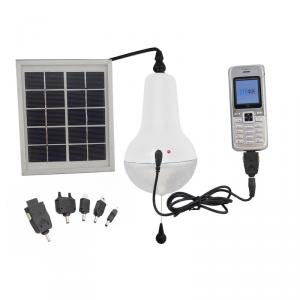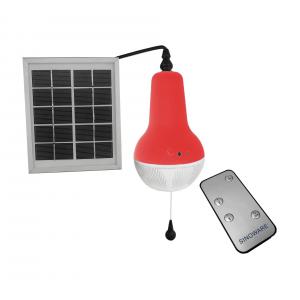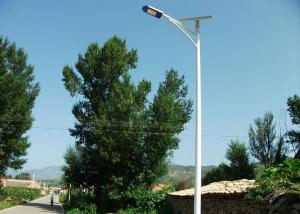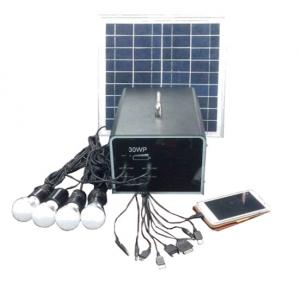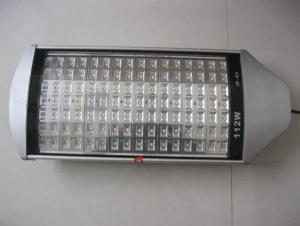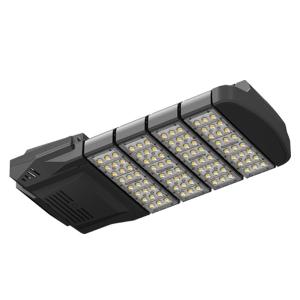Solar Light Kit - High Efficiency Solar Street Lights R200
- Loading Port:
- Shanghai
- Payment Terms:
- TT or LC
- Min Order Qty:
- 10 pc
- Supply Capability:
- 10000 pc/month
OKorder Service Pledge
OKorder Financial Service
You Might Also Like
1, Product desciption
Inverter circuits designed to produce a variable output voltage range are often used within motor speed controllers.
The DC power for the inverter section can be derived from a normal AC wall outlet or some other source. Control and feedback circuitry is used to adjust the final output of the inverter section which will ultimately determine the speed of the motor operating under its mechanical load.
Motor speed control needs are numerous and include things like: industrial motor driven equipment, electric vehicles, rail transport systems, and power tools. (See related: variable-frequency drive ) Switching states are developed for positive, negative and zero voltages as per the patterns given in the switching Table.
The generated gate pulses are given to each switch in accordance with the developed pattern and thus the output is obtained.
And magnifying glass is then used to warm up the pipe.
Using more than one magnifying glass will increase the temperature more rapidly.
2, Features of the product
Inverters convert low frequency main AC power to higher frequency for use in induction heating.
To do this, AC power is first rectified to provide DC power. The inverter then changes the DC power to high frequency AC power. Due to the reduction in the number of DC Sources employed, the structure becomes more reliable and the output voltage has higher resolution due to an increase in the number of steps so that the reference sinusoidal voltage can be better achieved.
This configuration has recently become very popular in AC power supply and adjustable speed drive applications. This new inverter can avoid extra clamping diodes or voltage balancing capacitors. There are three kinds of level shifted modulation techniques, namely: 1,High and stable conversion efficienly based on over 4 years professional experience
2 ,High reliability with guaranteed +/-10% output power tolerance
3,Proven materials,tempered front glass,and a sturdy anodized aluminum frame allow modules to operate reliably in multiple mountily configurations
4,Combination of high efficicncy and attractive appearance
The first thing to figure out is the length of road in need of street lights.
This can be a small entrance road only a couple hundred of feet long to miles of streets through an area. Does the area currently have any type of lighting available.
What is the reason for needing street lights in this area
Is the electrical grid already nearby or would you need to call in the power company to bring in electrical lines.
If the electric needs to be brought to the area, how much is this going to cost? Depending on how far the grid electric is from the location of the needed lighting, this can be quite expensive.
How much lighting is needed on the street? Do the lights need to be dark sky compliant.
Do the street lights need to run from dusk to dawn or for only a specified number of hours at night.
Are the street lights able to dim in the middle of the night and still provide enough lighting.
These questions need to be answered before you can decide on how many lights you will need to complete the project.
3, Detailed Specification
| ||||||||||||||||||||||||||||||||||||||||||||||||
4, Product Image
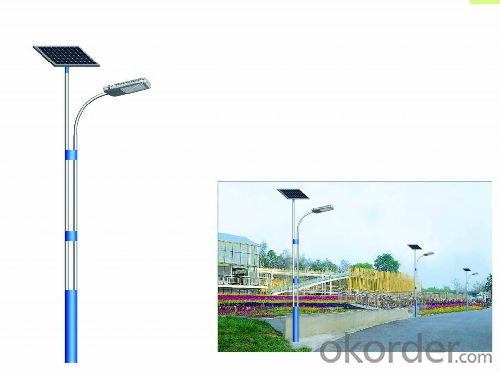
- Q: What is the cost of installing solar lights?
- The cost of installing solar lights can vary depending on various factors such as the type and quality of the lights, the size of the area to be illuminated, and the complexity of the installation process. On average, the cost can range from $100 to $1,500 per light. However, it's important to consider the long-term benefits of solar lights, as they are powered by renewable energy and have minimal operating costs. Over time, solar lights can help save on electricity bills and reduce carbon emissions, making them a worthwhile investment in the long run.
- Q: Are there solar lights with adjustable beam angles?
- Yes, there are solar lights available in the market with adjustable beam angles. These lights typically come with a feature that allows users to adjust the beam angle according to their preferences or specific lighting requirements.
- Q: How do you dispose of solar lights properly?
- Solar lights are considered electronic waste and should not be thrown in the regular trash. The proper way to dispose of solar lights is to recycle them at a designated electronic waste recycling facility. Many recycling centers accept solar lights, so it's best to check with your local recycling facilities or municipal waste management services for guidance on proper disposal methods.
- Q: Can solar lights be used in areas with high levels of light pollution?
- Solar lights can still be used in areas with high levels of light pollution, but their effectiveness may be reduced. The excessive artificial light can diminish the ability of solar lights to charge efficiently during the day, resulting in reduced brightness and shorter operating times at night.
- Q: Are solar lights eco-friendly?
- Yes, solar lights are eco-friendly. They harness the power of the sun to generate electricity, eliminating the need for traditional energy sources like coal or oil. This means they do not contribute to air or water pollution or emit greenhouse gases. Additionally, solar lights do not require any wiring or electricity connection, reducing the strain on the electrical grid and conserving energy. Overall, solar lights are a sustainable and environmentally-friendly lighting option.
- Q: Can solar lights be used for flagpoles?
- Yes, solar lights can be used for flagpoles. They are a popular and eco-friendly choice for illuminating flags at night. Solar lights use energy from the sun to power their LED bulbs, eliminating the need for electrical wiring or batteries. They are easy to install and provide a reliable and cost-effective way to showcase flags on flagpoles.
- Q: Are solar lights suitable for lighting up parking lots?
- Yes, solar lights can be suitable for lighting up parking lots. They are a cost-effective and environmentally friendly option, as they harness energy from the sun to power the lights. Solar lights are easy to install, require minimal maintenance, and can provide sufficient illumination for parking lots during the night. However, their effectiveness may depend on factors such as the size of the parking lot, the number of lights needed, and the amount of sunlight available in the area.
- Q: Are solar lights resistant to chemical exposure?
- Solar lights, in general, can resist exposure to chemicals, but the degree of resistance can vary based on the materials used in their construction. Typically, solar lights are designed to endure outdoor conditions such as rain, heat, and sunlight. However, they may not be entirely impervious to all forms of chemical exposure. Most solar lights possess a protective coating or casing that safeguards them against damage caused by chemicals, such as those commonly found in fertilizers or cleaning solutions. This coating or casing is typically composed of sturdy materials like plastic or metal, capable of withstanding mild chemical exposure. Nevertheless, it is worth noting that excessive or prolonged exposure to certain chemicals can still cause harm to solar lights. Strong acids or alkalis, for example, have the potential to corrode or deteriorate the materials used in solar lights, resulting in reduced functionality or even complete failure. Consequently, it is advisable to avoid direct contact with chemicals and to clean solar lights exclusively with mild, non-abrasive cleaning agents. In conclusion, while solar lights generally possess resistance to chemical exposure, it is crucial to be cautious of the types and potency of chemicals they encounter. By taking appropriate precautions and utilizing gentle cleaning agents, the longevity and functionality of solar lights can be ensured.
- Q: Are solar lights resistant to extreme temperatures?
- Yes, solar lights are generally designed to be resistant to extreme temperatures. They are built with materials and components that can withstand both very cold and very hot temperatures without affecting their performance.
- Q: Can solar lights be used as portable lighting?
- Yes, solar lights can indeed be used as portable lighting. Portable solar lights are designed to be lightweight and easy to carry, making them perfect for outdoor activities such as camping, hiking, or even backyard parties. These lights are equipped with small photovoltaic panels that convert sunlight into electricity, which is stored in built-in batteries. This stored energy can then be used to power the light during nighttime or in areas with limited access to electricity. Additionally, some portable solar lights come with additional features like USB ports, allowing you to charge your electronic devices on the go. Overall, solar lights offer a convenient and eco-friendly solution for portable lighting needs.
Send your message to us
Solar Light Kit - High Efficiency Solar Street Lights R200
- Loading Port:
- Shanghai
- Payment Terms:
- TT or LC
- Min Order Qty:
- 10 pc
- Supply Capability:
- 10000 pc/month
OKorder Service Pledge
OKorder Financial Service
Similar products
Hot products
Hot Searches
Related keywords
